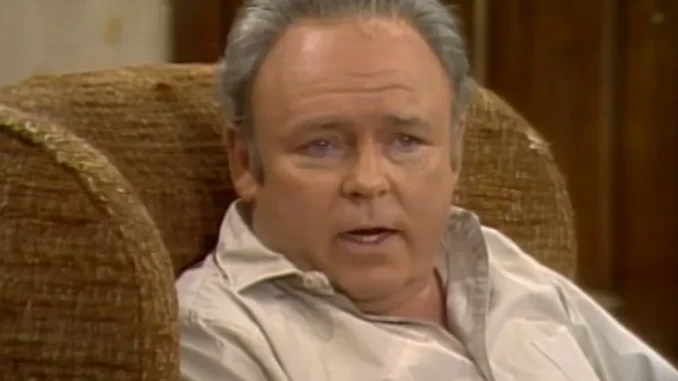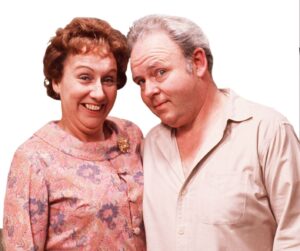
The return of ABC’s ‘Roseanne’ inspires a reevaluation of television’s history of portraying the working class
Later this month, the beloved 1990s family sitcom “Roseanne” returns to ABC. The reboot comes at a perfect cultural moment–television comedy is thriving in its second Golden Age, and while recent shows have made strides exploring issues of identity from race to sexuality, the elephant in America’s living rooms, class, has been only spottily addressed in the 20 years that “Roseanne” has been off the air.
From their post-WWII inception, American sitcoms showcased primarily affluent, aspirational, white families; think of the Cleavers on “Leave it to Beaver,” the Andersons on “Father Knows Best,” and the Nelsons on “The Adventures of Ozzie and Harriet.” An academic study of 262 situational comedies from 1946-1990 revealed that only 11 percent of programs featured blue-collar characters as heads of household – the most notable were the two “ethnic” comedies that came directly from old radio programs like “The Goldbergs” and “Amos ‘n’ Andy.” In the 1950s and 1960s, the genre was dominated by professional, college-educated protagonists and their impressive, pristine homes. (The only real exception was “The Honeymooners,” which aired in the mid-50s and starred Jackie Gleason as New York City bus driver and would-be domestic batterer Ralph Kramden.)
Everything changed in the 1970s, when the media “discovered” the American working class, as the country confronted a host of economic changes alongside social shifts stemming from the civil rights and women’s liberation movements. The prosperity of the postwar era gave way to a period of instability marked by sluggish growth, record inflation, high oil prices, deindustrialization and foreign competition. While communities of color had always struggled to get by due to fewer opportunities for living wage work, many white Americans found that their share of the postwar bounty was shrinking during this period, threatening their standard of living for the first time since the Great Depression.

Although the stubborn myth of America as a “classless” society persisted, our socioeconomic reality more closely resembled the class stratification that had been present for generations in Europe. Fittingly, our first class-conscious, post-corporate hit sitcom was based on a program from across the pond. Inspired by Britain’s “Till Death Do Us Part,” writer and producer Norman Lear created “All in the Family” in 1971, which ran for nine seasons on CBS. Like its British inspiration, the show was about the generation gap between a reactionary patriarch and his more liberal offspring.
“All in the Family” was a groundbreaking commercial success, ranking number one in the Neilsen ratings for five years. By 1975, one-fifth of the entire country was tuning in. The propelling force of “All in the Family” was Carroll O’Connor as Archie Bunker, a warehouse dock worker who drove a taxi for extra income and lorded over his family in their Queens row house. The sitcom, like the rest of Lear’s oeuvre, represented a turning point for its engagement with topical, controversial themes, such as race relations, homosexuality and feminism – an effort to reach baby boomer audiences – and for representing the kind of ordinary, working people who had thus far been invisible on screen. Archie was one of television comedy’s first white hourly wage earners, undermining the media perception that white Americans made up a homogeneously middle-class demographic.
“Archie chomps cheap cigars, swills supermarket beer and controls all foreign and domestic rights to his favorite chair in front of the battered TV,” read a 1971 Newsweek review. Viewers could see reflections of their own homes in the Bunker’s “cheery-drab” row house, complete with chipped wallpaper, fingerprints on the light switches, and grime on the kitchen tiles. According to Ryan Lintelman, curator at the Smithsonian’s National Museum of American History, “The living room set of the Bunker home, like its location in Astoria, Queens, was designed to emphasize Archie’s working-class bona fides.” His iconic armchair, now part of the museum’s collection, “was supposed to look like a well-used piece of furniture that could have been in any family home: comfortable but worn, somewhat dingy, and old-fashioned.” (Earlier this year, the family of Jean Stapleton, who played Archie’s wife Edith, donated the apron she donned and other artifacts from her career to the museum.)
The dilapidated aesthetic mirrored Archie’s character traits; he was retrograde, incapable of dealing with the modern world, a simpleton left behind by the social upheavals of the 1960s and 1970s, a pathetically displaced “historical loser.” Lear used him as a device to make racism and sexism look foolish and unhip, but liberals protested that as a “loveable bigot,” Archie actually made intolerance acceptable.
